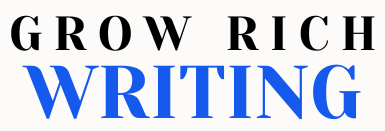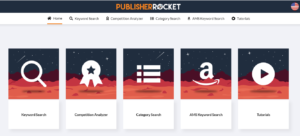If you’re a writer researching how to publish your book, you’ve probably encountered the terms ‘traditional publishing’ and ‘self-publishing’ by now. And now you’re wondering, ‘What is Self Publishing?’ or ‘What does it mean to Self Publish a Book?’
Well, this article should help you understand what self-publishing a book is, how it differs from traditional publishing, and the pros and cons of self-publishing a book.
What is Self-Publishing? What does it mean to Self-Publish Your Book?
Self-Publishing is when an author or writer publishes their own work independently without working with or signing with a publishing house or company, usually referred to as a traditional publisher.
A self-published author writes a book, refines the book for publishing (editing, designing, formatting, and packaging the book), and publishes it at their own expense without the help of a traditional publishing company. As such, they have full creative control over the book editing, book cover design, book formatting, and marketing of the book.
Not only do self-published authors bear all the costs of publishing that book, but they also enjoy higher book royalty rates and maintain full rights to their books in all formats and all territories.
You can get more information on how Self-Publishing works in this article.
The History of Publishing: From Traditional Publishing to Self, Traditional and Hybrid Publishing
Publishing has always existed but it was after the invention of the printing press in 1045 that books became more widely available.
Back then, authors could only publish their books wide through traditional publishers who held all the power back then to decide whether a book was worth publishing or not.
Usually, traditional publishers look at the marketability of your book and the possibility of that book becoming a bestseller before they decide whether or not it is worth publishing. Then, they would either reject it or sign a contract with the author.
With traditional publishers serving as gatekeepers, many authors had to give up the idea of publishing their books after getting too many rejection notices from traditional publishers.
Self-Publishing started becoming a thing as far back as the 1990s when ebooks began to be sold online. But it only became prevalent in 2007 when Amazon launched the Kindle eReader and Apple released the iPhone, effectively changing how people read books forever.
Now Authors can publish their own books using platforms like Amazon KDP, Kobo Writing Life, Apple Books, Google Play Books, Streetlib, Publishdrive, and Draft2Digital.
And we’ve seen over and over again that books that were queried and got rejected over and over by traditional publishers were eventually enjoyed by thousands and even millions of readers. Examples of such books are Switched by Amanda Hocking, Fifty Shades of Grey by E. L. James, Eragon by Christopher Paolini, The Martian by Andy Weir, and many others.
Today, every author has three publishing options:
- Self-Publishing
- Traditional Publishing – This means getting your book published by a publishing house or company that offers you a contract that essentially buys certain rights to your books. They in turn pay the author an advance and print, publish and sell your book via different book retailers and stores online and offline.
- Hybrid Publishing – Hybrid Publishing combines elements of traditional and self-publishing. In fact, very often, it can veer a little too close to Vanity publishing depending on what hybrid publisher you choose to work with. With hybrid publishing, an author does not receive an advance on their book but they don’t have to handle the editorial, design, and marketing work. Instead, the author pays the hybrid publisher the production costs to get the book published or shares the production costs and royalties with the publisher.
Beware that many hybrid publishers and even some trad publishers and small presses can try to cut costs on refining your book and hereby produce poor quality books.
Pros and Cons of Self-Publishing
Advantages of Self-Publishing Your Book
1. No Rejections
You don’t have to query and query for years collecting rejection letters like love letters. You can just self-publish that book you always wanted to publish.
2. Shorter Publishing Timelines
Traditionally published books can take between nine months to two years to go from signed contract to publication but self-published authors can get their books on the market faster.
That’s why some established self-published authors publish new books every month or every few months.
3. Complete Creative Control
Many traditionally published authors have no say in the cover design, editing, or formatting of their books but self-published authors have all the control, even if they hire an editor, book formatting expert, or cover designer.
4. Higher Royalty Rates and Earning Potential
After advances, traditionally published authors only earn between 8-10% royalty on their books if they manage to earn out their advances. But a self-published author earns 70-100% of their book sales selling on either Amazon or their own website.
5. Low barrier to entry
Anyone can self-publish their books. There are tons of free materials on the internet: blogs, Youtube, etc. to teach you how to go about it and there’s also free help on various Facebook groups, Reddit forums, etc.
Disadvantages of Self-Publishing Your Book
1. Little to no support from industry experts
Self-Published authors are essentially on their own except they ask for advice from other authors or industry experts, unlike the readily available advice that traditionally published authors have access to.
2. Production Costs
Traditional Publishers have editorial, design, and marketing teams to manage most aspects of refining and marketing a book but as a self-published author, you’re going to have to do most of it and hire the right people to do those things you can’t do on your own.
3. Can be overwhelming
You’re responsible for everything. You need to make the choices, the decisions, etc., that could make or break your book.
4. No advance
You only earn when your book sells. No one is giving you an advance of a few thousand dollars to buy the rights to the book.
5. No Push
One of the cons of being the ‘boss’ is that you set your own deadlines and goals. And if you’re not careful, you may not get anything done due to procrastination or overwhelm.
6. The Stigma
Although it’s slowly disappearing, there is a stigma to self-publishing. There used to be a time when readers fled when they saw the words ‘independently published’ because those words usually meant poor quality books but as self-published authors produce more quality work, this stigma is slowly disappearing.
7. Print Distribution issues
Many established traditional publishers have deals with bookstores which makes it easier for traditionally published authors’ books to get into bookstores. But don’t fret, getting print copies into bookstore shelves has become easier for self-published authors these days. Using a platform like Ingram Spark and its ingenious Print-on-Demand system, you can get your print books into bookstores and even libraries.
Final Thoughts
Self-Publishing has several benefits and several disadvantages but once you understand how self-publishing works, it becomes an easy process for you. And like authors who self-publish new books every month, 2 months, or 3 months, you can repeat the process over and over eliminating all the mistakes you made before and becoming better at it.
Another thing is that authors need to remember not to put themselves into boxes.
You can self-publish a book and you can also traditionally publish another book. You’re not locked into being a self-published author or a traditionally published author for the rest of your life. You can enjoy the best of both worlds together or choose the one that works best for you.









